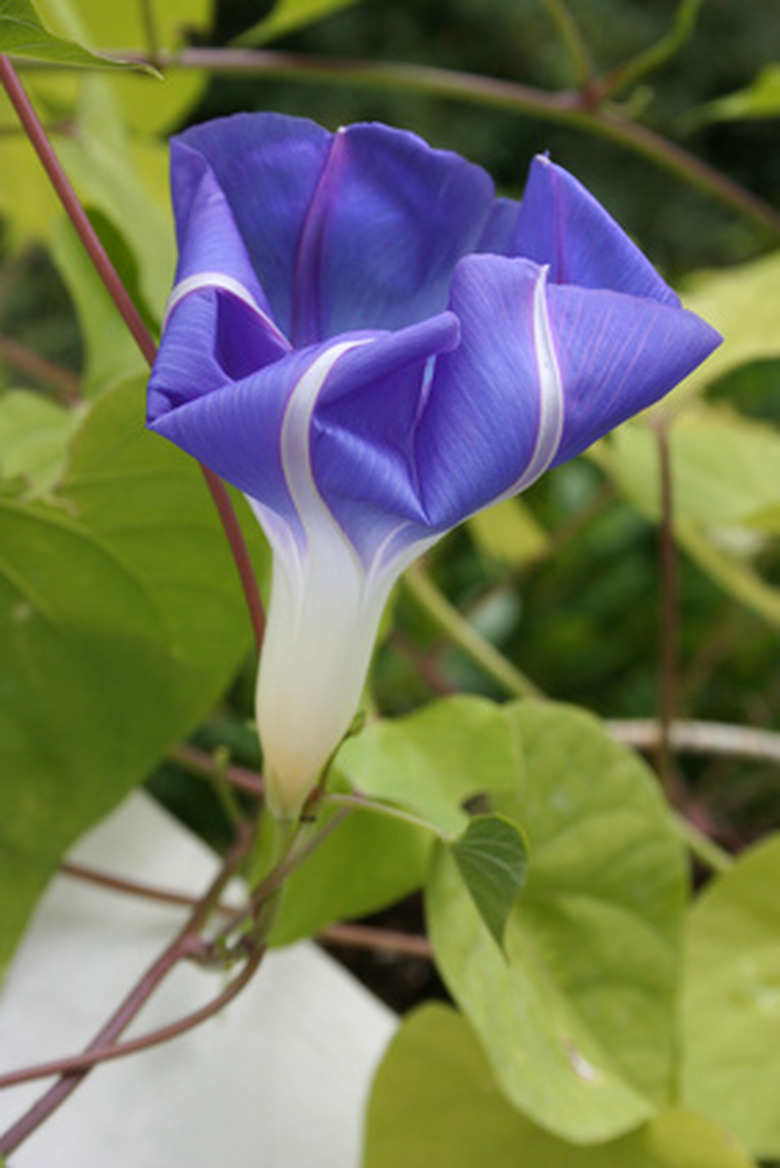Difference Between Night Blooming Plants & Day Blooming Plants
The most obvious difference between day and night bloomers is clear: one blooms at night, the other during the day. But a closer look at the plants that crave bright sunlight versus those that live in the moonlight reveals their individual likes and dislikes and why a gardener might choose one over the other.
Plant Basics
There are hundreds of thousands plant species inhabiting the earth, and they can be vastly different from one another. Some flowering plants are near microscopic in size, while others are huge. The corpse flower (Rafflesia arnoldii) not only ranks as the species with the largest bloom–up to three feet in diameter–it also defies the notion that all plants participate in photosynthesis, because it is a parasite. The blossoms of most bloomers, including the corpse flower, open over a period of time and then die. Day and night bloomers differ from most flowers in their commonality–they open and close in the span of a day.
- The most obvious difference between day and night bloomers is clear: one blooms at night, the other during the day.
- Day and night bloomers differ from most flowers in their commonality–they open and close in the span of a day.
Genetics
It isn't a single difference that determines whether or not a plant will bloom at evening or in daylight. Rather, it is the play of the plant's genetic makeup against its environmental factors. Through the study of flower phenology, scientists look at a plant's growth and reproduction. Flowers that bloom at day are genetically different from those that bloom at night.
Plant Structure
The "stomata" of a plant are tiny pore-containing structures that are present on all land plants. Water vapor, oxygen and carbon dioxide move in and out of a plant through these stomata. In day bloomers, the stomata are open in daylight and closed at night. Conversely, night bloomers open their stomata during night hours and close at daybreak.
- It isn't a single difference that determines whether or not a plant will bloom at evening or in daylight.
- Through the study of flower phenology, scientists look at a plant's growth and reproduction.
Environmental Conditions
Most flowers that open and close do so in response to their environments. As such, day bloomers, being more common, are found in more climates and geographic locations. Night bloomers are native to the recesses of rainforests and arid desert regions.
Pollination is another environmental factor. While day bloomers are often pollinated by day-flying birds, bees, and insects, night bloomers are more likely to depend upon moths, bats and nocturnal rodents for pollination.
Examples
Flower type is another distinction between day and night bloomers. The name "morning glory" encompasses hundreds of flower species. While the bright blue day bloomer opens its petals each morning, a species of morning glory known as the moonflower opens at night. Familiar day bloomers include African daisies, California poppies, crocuses and some lily species. Night bloomers include angel's trumpet, evening primrose, moon frolic, night phlox and evening stock. The night-blooming cereus is a particularly interesting plant, because it blooms for a single night. Gardeners sometimes celebrate the annual occurrence by hosting parties in its honor.
- Most flowers that open and close do so in response to their environments.
- The night-blooming cereus is a particularly interesting plant, because it blooms for a single night.
A plant's scent may also be prompted by evening hours. Plants that release their aromas at night include the August lily, fragrant columbine, night gladiolus, flowering tobacco and the fairy lily.
